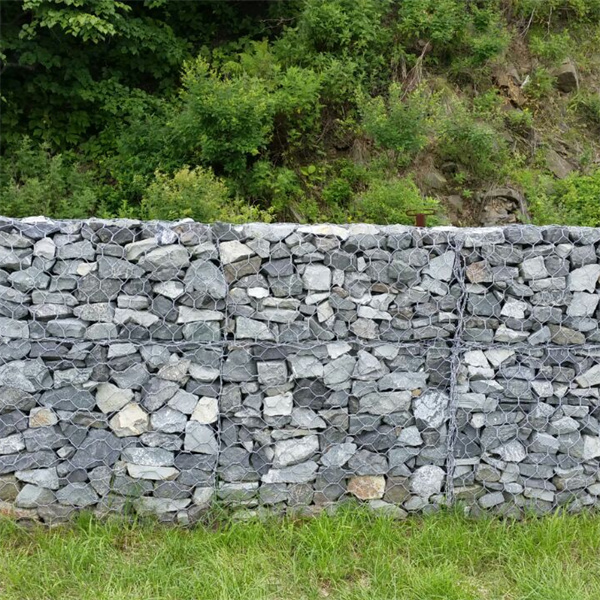Lap . 30, 2024 12:10 Back to list
Innovative Gabion Retaining Wall Designs from Leading Manufacturers for Modern Applications
Modern Gabion Retaining Wall Factories A Blend of Innovation and Sustainability
In the contemporary landscape of civil engineering and landscape architecture, gabion retaining walls have emerged as a significant solution for managing soil erosion, creating terraces, and supporting slopes. These unique structures consist of wire mesh cages filled with natural stones, offering both aesthetic and functional advantages. As the demand for sustainable construction and innovative design grows, modern gabion retaining wall factories are at the forefront, revolutionizing the industry.
Understanding Gabion Retaining Walls
Gabion walls are a simple yet versatile design that dates back thousands of years. Traditionally, these structures were created from woven willow branches and filled with local stones. Today, advancements in materials and technology have transformed the manufacturing process. Modern gabion retaining walls are made using galvanized steel wire, which is not only durable but also resistant to corrosion. This ensures longevity and strength, making them suitable for various environmental conditions.
The Factory Experience
Modern gabion retaining wall factories utilize cutting-edge technologies to streamline the production process. The factories are equipped with automated systems for cutting, bending, and assembling wire mesh, ensuring precision and efficiency. Furthermore, the use of computer-aided design (CAD) software allows for the customization of gabion panels to meet specific project requirements.
In these factories, large rolls of wire are transformed into cages of varying sizes and shapes. Each gabion is crafted to accommodate different types of fill materials, ranging from locally sourced stones to recycled materials, aligning with the growing trend toward sustainability in construction. Notably, some factories are incorporating the use of eco-friendly materials and practices, emphasizing a commitment to environmental responsibility.
Sustainability and Environmental Impact
The environmental advantages of gabion walls are profound. Not only do they provide an effective solution for erosion control and slope stabilization, but they also blend seamlessly into natural landscapes. The use of natural stones minimizes the carbon footprint associated with transportation, as gabions can often be filled with materials available on-site. Moreover, the spaces between the stones enhance drainage, reducing water pressure and preventing damage.
modern gabion retaining wall factories

Modern gabion factories are increasingly focusing on utilizing recycled materials in their production processes. This not only addresses waste management issues but also contributes to a circular economy. By promoting the use of recycled stone and steel, these factories are leading the charge toward more sustainable construction practices.
Applications and Versatility
The versatility of gabion retaining walls makes them suitable for a plethora of applications. From residential landscaping projects to large-scale civil engineering ventures, these structures offer a range of benefits. They can be employed in constructing garden walls, sound barriers, and flood control systems. Additionally, their aesthetic appeal adds to the visual character of public spaces, parks, and commercial properties.
As urbanization continues to accelerate, the need for effective land management solutions becomes increasingly critical. Gabion retaining walls provide an environmentally friendly alternative to traditional concrete walls, and their modular nature allows for easy installation and flexibility in design. This adaptability is particularly beneficial in challenging terrains where conventional methods may be less viable.
Innovations in Gabion Technology
The future of gabion retaining walls lies in ongoing innovation. Modern factories are investing in research and development to enhance the durability and functionality of these structures. Innovations in wire coating, for instance, are aimed at improving corrosion resistance and extending the life span of gabions.
Additionally, advancements in geotechnical engineering are leading to the integration of gabion walls with other erosion control measures, such as vegetation and bioengineering practices. This synergy not only improves the structural integrity of the walls but also creates habitats for wildlife, promoting biodiversity.
Conclusion
Modern gabion retaining wall factories represent a harmonious blend of innovation, sustainability, and functionality. As the need for effective land management solutions continues to grow, these factories are paving the way for a greener future. By emphasizing the use of recycled materials, incorporating advanced production technologies, and exploring new applications, the gabion industry is well-positioned to meet the challenges of modern construction. Whether for residential, commercial, or environmental purposes, gabion retaining walls are a testament to the evolving nature of sustainable architecture and engineering.
-
The Role of Galvanized Gabion Mesh in Riverbank Protection
NewsJun.26,2025
-
The Role of Gabion Basket Raised Bed in Sustainable Gardening
NewsJun.26,2025
-
Quality Assurance of Wire Mesh Gabion Baskets
NewsJun.26,2025
-
Installation Guide for Welded Gabion Box
NewsJun.26,2025
-
How to Choose the Right Gabion Box
NewsJun.26,2025
-
Different Types of Gabion Wire Mesh
NewsJun.26,2025
-
Why PVC Coated Gabion Mattress Is the Best Solution for Long-Term Erosion Control
NewsMay.23,2025






